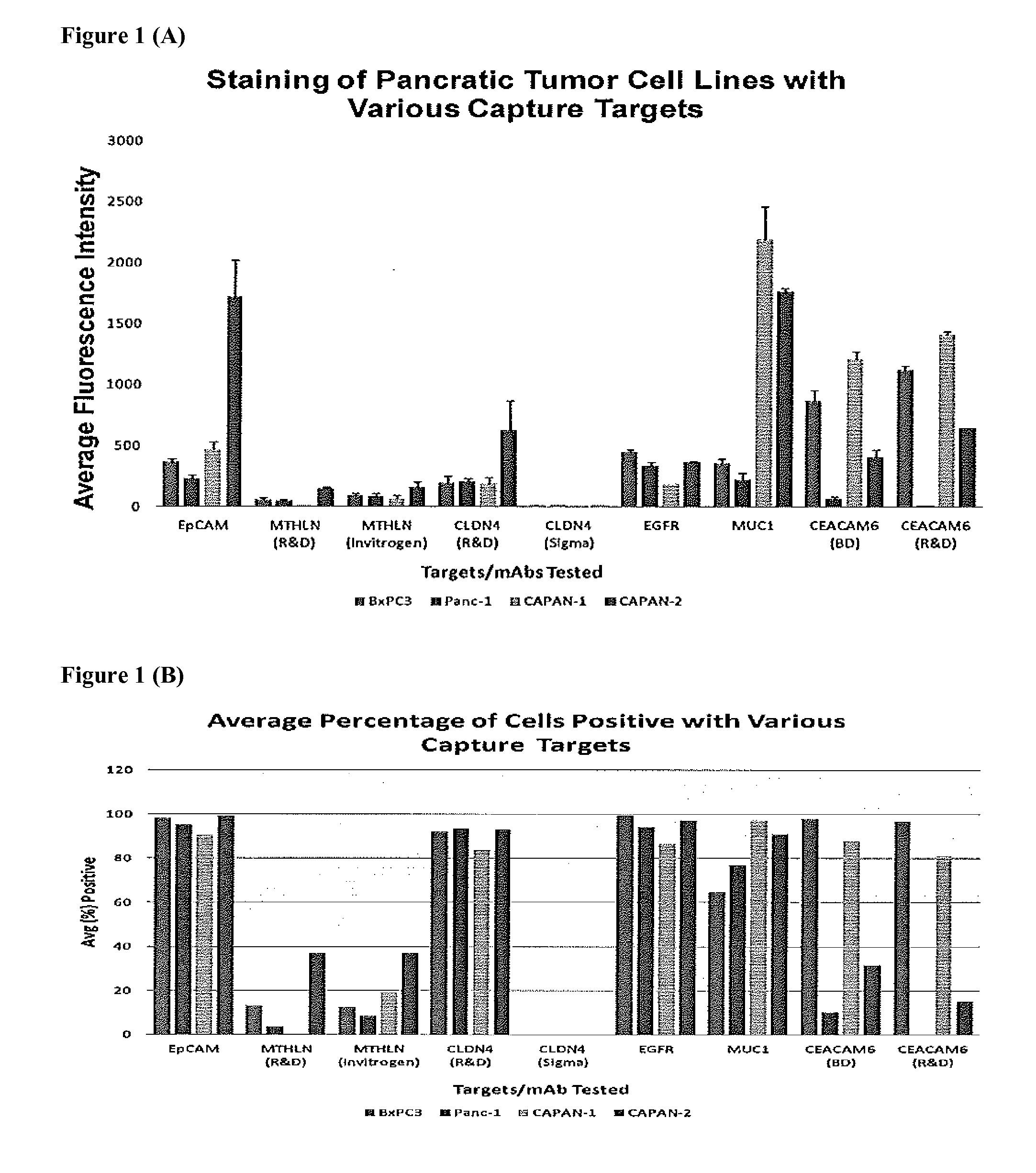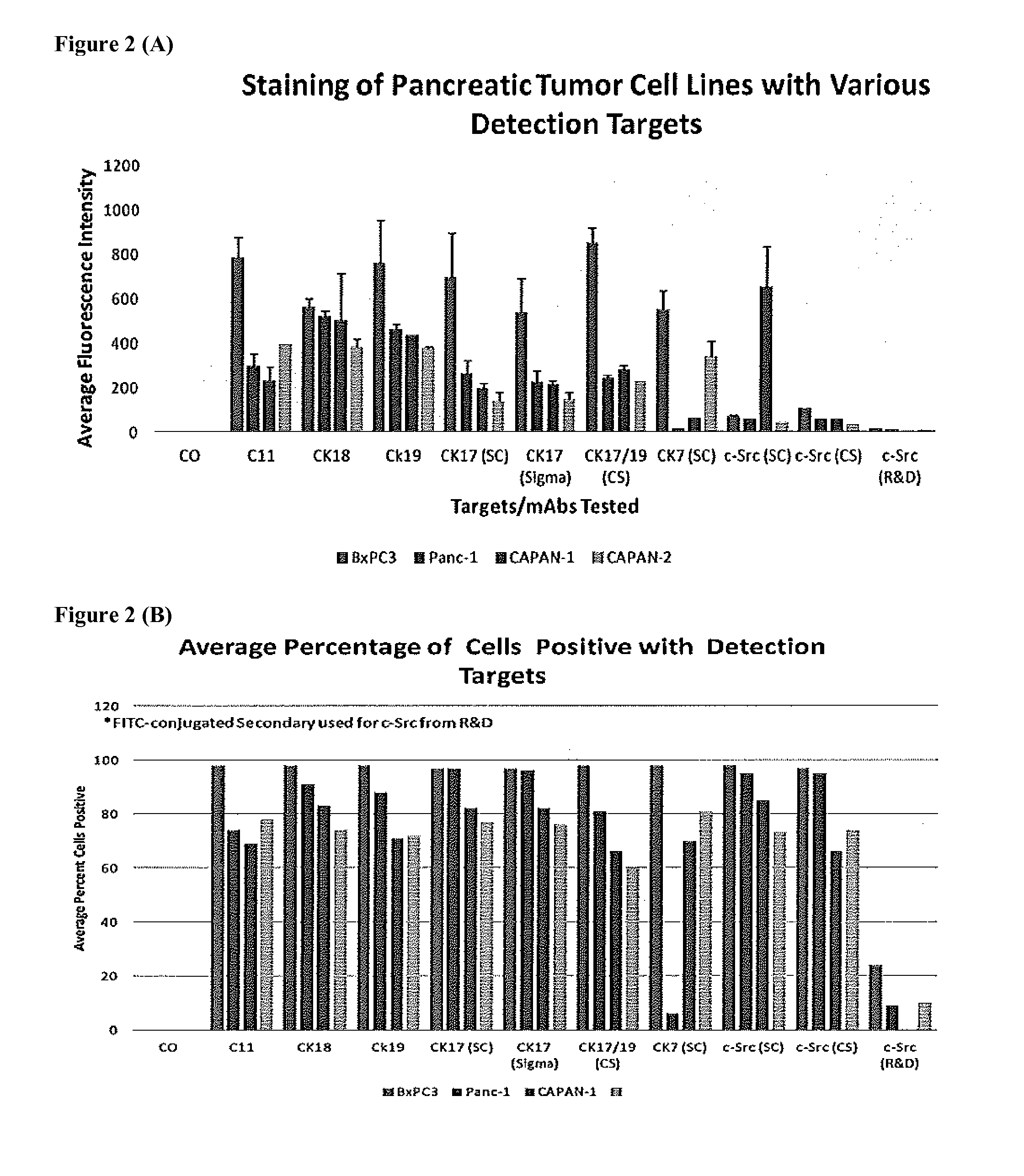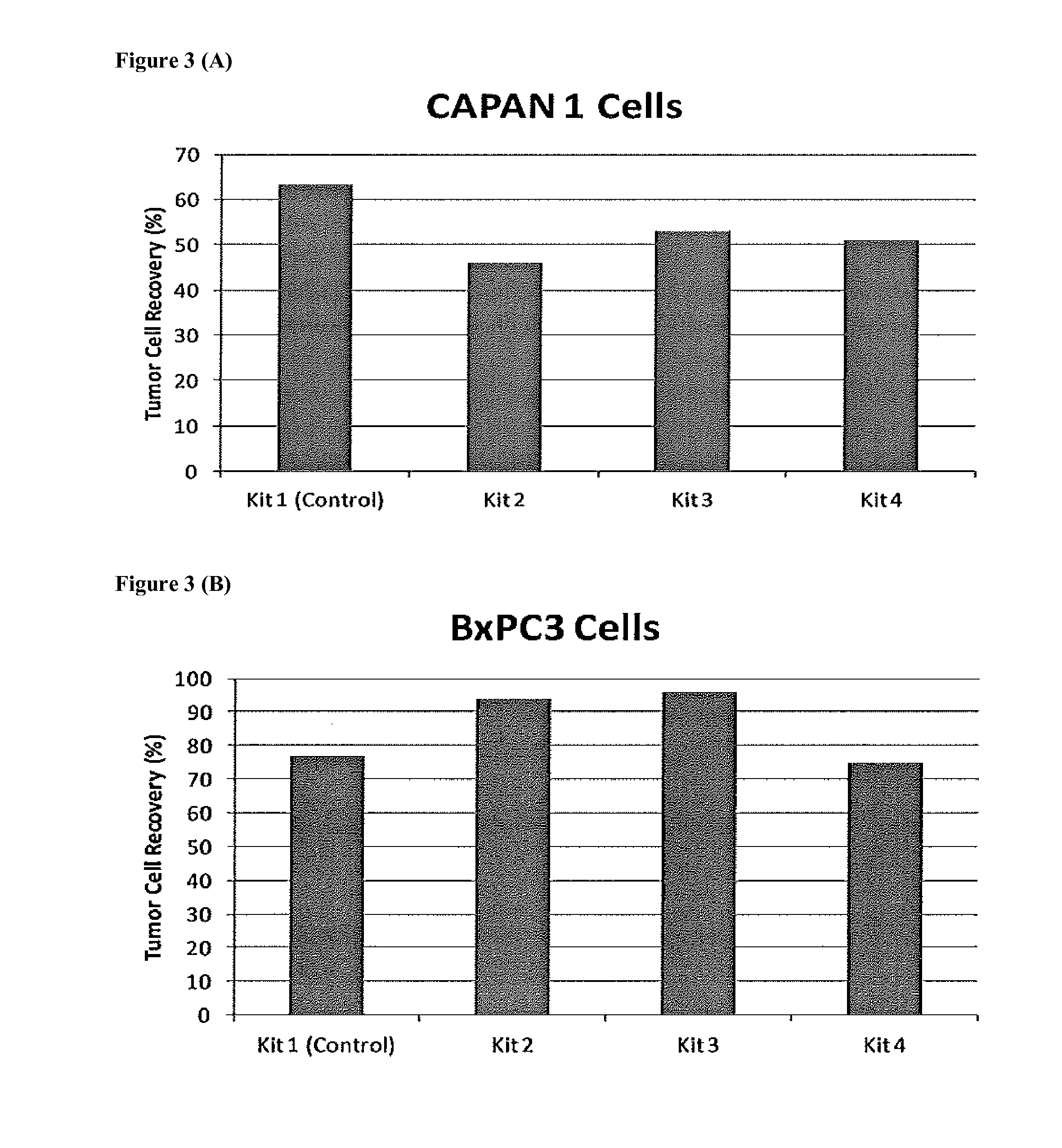Methods and kits for the detection of circulating tumor cells in pancreatic patients using polyspecific capture and cocktail detection reagents
a technology of circulating tumor cells and detection kits, applied in the field of oncology and diagnostic testing, can solve the problems of inability to detect tpcs or emts in cancer patients, the test configuration may not be optimal for detection, and the ctcs present in the blood of cancer patients that are not detected, so as to achieve the effect of improving the detection of ctcs, low non-specific binding, and sufficient binding capacity
- Summary
- Abstract
- Description
- Claims
- Application Information
AI Technical Summary
Benefits of technology
Problems solved by technology
Method used
Image
Examples
Embodiment Construction
[0029]According to a preferred embodiment, the present invention provides compositions, methods and kits for the rapid and efficient isolation of rare target bioentities from biological samples using polyspecific ferrofluids. The methods described may be used effectively to isolate and characterize tumor cells present in a blood sample while at the same time minimizing the selection of non-specifically bound cells.
[0030]Using multiple capture and detections reagents as described herein, rare cell assays are further improved upon from the single target molecule used previously. This modification improves the capture and detection of rare cells such as, but not limited to, pancreatic CTCs. In addition, the non-epithelial markers such as mesenchymal markers (n-cadherin) can be used in conjunction with epithelial markers to capture both epithelial and mesenchymal tumor cells. The present invention enables the simultaneous detection of different populations of rare cells, such as CTCs an...
PUM
 Login to View More
Login to View More Abstract
Description
Claims
Application Information
 Login to View More
Login to View More - R&D
- Intellectual Property
- Life Sciences
- Materials
- Tech Scout
- Unparalleled Data Quality
- Higher Quality Content
- 60% Fewer Hallucinations
Browse by: Latest US Patents, China's latest patents, Technical Efficacy Thesaurus, Application Domain, Technology Topic, Popular Technical Reports.
© 2025 PatSnap. All rights reserved.Legal|Privacy policy|Modern Slavery Act Transparency Statement|Sitemap|About US| Contact US: help@patsnap.com



